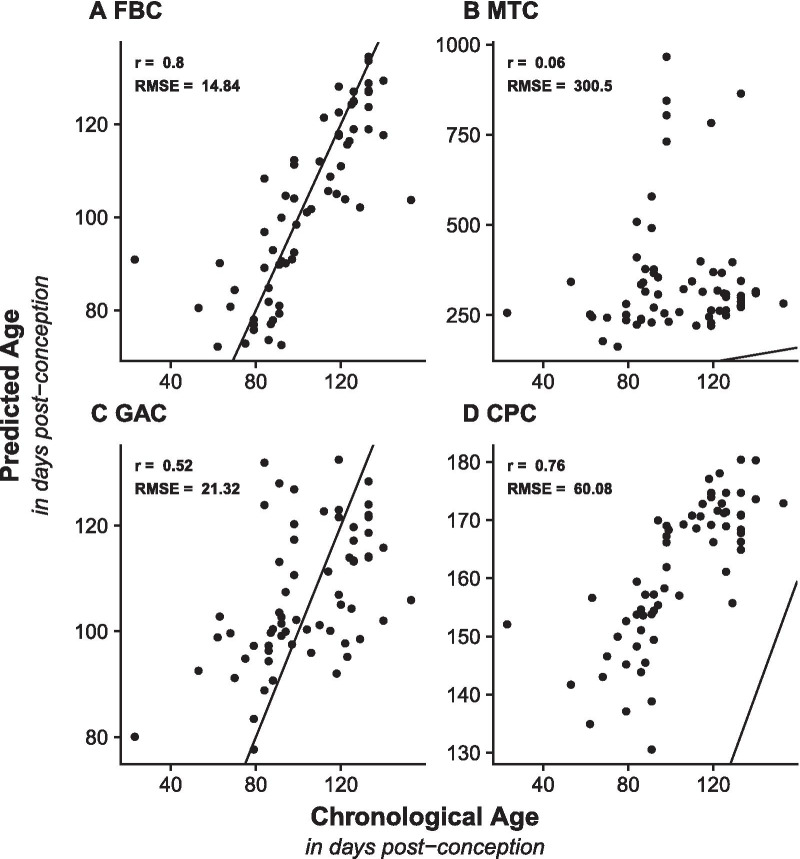Fig. 1.
The Fetal Brain Clock (FBC) outperforms other DNAm clocks when applied to neurodevelopmental samples. Shown are scatterplots comparing chronological age (x-axis; days post-conception (dpc)) against predicted epigenetic age (y-axis; days post-conception) calculated using A Fetal Brain Clock (FBC), B Horvath’s Multi Tissue Clock (MTC), C Knight’s Gestational Age Clock (GAC), and D Lee’s Control Placental Clock (CPC) in our fetal brain testing dataset (n = 65, age range = 23–153 dpc). The black line indicates the identity line of chronological and predicted epigenetic age and represents a perfect prediction. Two statistics were calculated to evaluate the precision of each DNAm clock: Pearson’s correlation coefficient (r) and the root mean squared error (RMSE)

